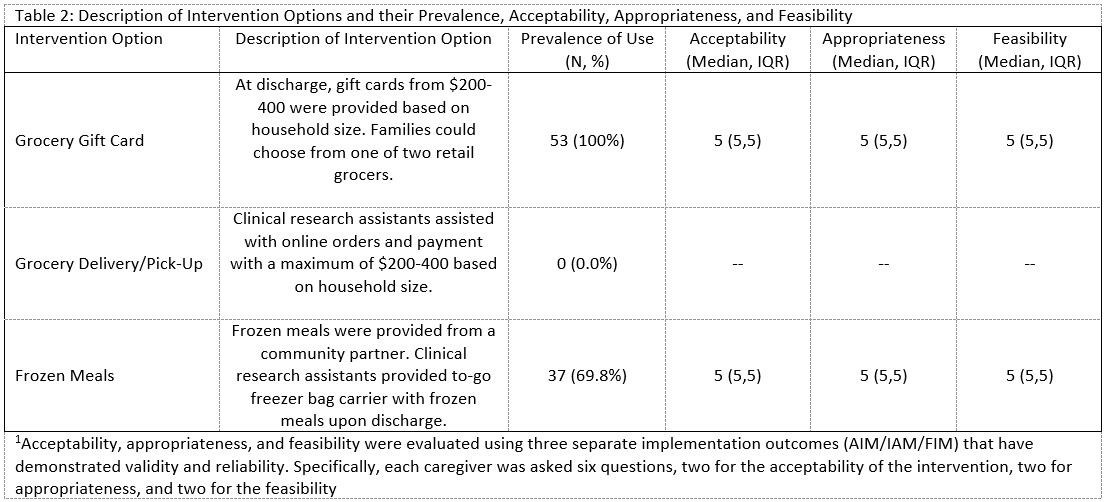Health Equity/Social Determinants of Health
Session: Health Equity/Social Determinants of Health 2
443 - Addressing Food Insecurity in the Pediatric Setting: Results of a Pilot Intervention to Address Post-Discharge Food Insecurity
Friday, May 3, 2024
5:15 PM - 7:15 PM ET
Poster Number: 443
Publication Number: 443.432
Publication Number: 443.432
- KT
Kerry Tepe, BS
Clinical Research Coordinator
Cincinnati Children's Hospital Medical Center
Cincinnati, Ohio, United States
Presenting Author(s)
Background: There is growing interest in addressing food insecurity (FI) during pediatric hospitalization. While FI screening is welcomed by families, there is a need to understand the feasibility of interventions initiated during hospitalization and employed during the transition home after discharge.
Objective: We sought to evaluate the feasibility, acceptability, and appropriateness of potential food support interventions provided at discharge for families experiencing FI during hospitalization.
Design/Methods: We performed a pilot study of discharge interventions for families experiencing FI at a large, freestanding children's hospital. Caregivers were considered food insecure if they indicated a positive response to any question on either the Six-item United States Department of Agriculture (USDA) survey or the HealthWatch Hunger Vital Sign (HVS) Screener when screened during hospitalization. The interventions included three options for food insecure caregivers to choose from at discharge: (1) grocery store gift cards, (2) grocery delivery/pick-up, and/or (3) frozen meals. Seven days after discharge, a clinical research coordinator contacted caregivers to ask about the interventions’ acceptability, appropriateness, and feasibility, evaluated using an adaptation of a previously published tool. The tool assesses each dimension on a Likert Scale, ranging from “Completely disagree” (1) to “Completely agree” (5). We also screened families for ongoing FI using the HVS. We summarized the median and interquartile range (IQR) for Likert scales and compared in-hospital and post-discharge FI using McNemar’s test.
Results: Of the 209 families who completed screening, 53 (25%) endorsed FI during the hospital stay (Table 1). All 53 caregivers agreed to participate in the intervention, and 50 caregivers completed the post-discharge assessment. Every family selected the grocery gift card; none selected grocery delivery/pick-up. Additionally, 37 families (69.8%) received frozen meals. Seven days after discharge, caregivers rated gift cards and frozen meals acceptable (median 5, IQR 5,5), appropriate (median 5, IQR 5,5), and feasible (median 5, IQR 5,5) (Table 2). There was a significant decrease in the number of families who reported ongoing FI based on the HVS, from 80% during hospitalization to 44% seven days after discharge (p < 0.001).
Conclusion(s): This pilot study demonstrates the acceptability, appropriateness, and feasibility of providing gift cards and frozen meals to address FI as families transition home after hospital discharge.
.jpg)

